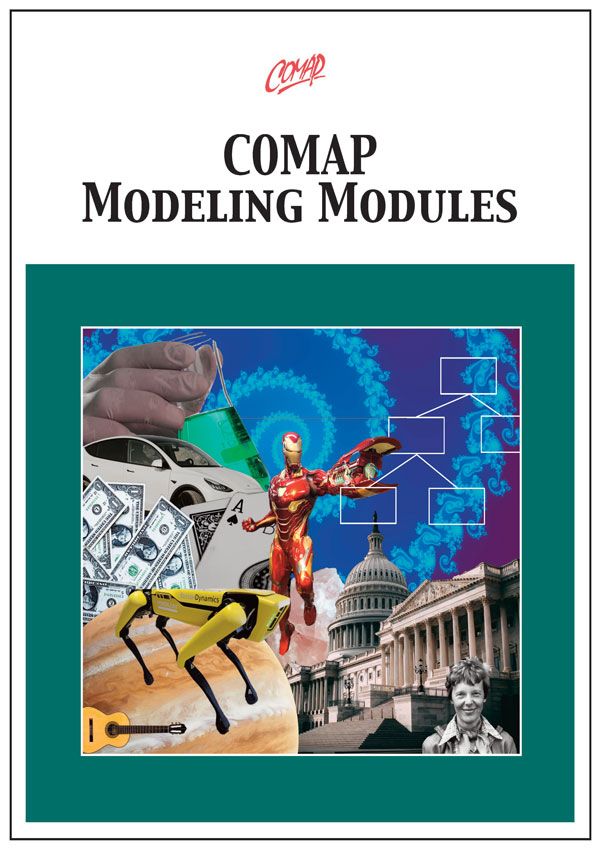Modeling Pooled-Sample Testing, Part II (Modeling Module)
Author: Marsha Davis
COMAP presents a series of modules designed for teaching mathematics through the modeling of real-world phenomena. Most modules are suitable for use in high school classes, and some can be used in middle school, undergraduate courses, and in teacher education.
These modules are free to download and use in classrooms. Teachers have our permission to copy and distribute the student pages in their classes.
Each module in the series is built around several classroom activities. Each module includes student activity pages, teaching notes, and answers. Teaching notes and answers are in two-column format at the beginning of the module. Student activity pages are in full-page format at the end of the module.
Since technology plays a key role in mathematical modeling, most modules in this series offer opportunities to apply one or more forms of technology, such as graphing calculators and/or online graphing utilities, spreadsheets, and geometric utilities.
The context for this Modeling Module involves modeling pooled- sample testing for diseases or drug usage in order to reduce costs and/or conserve resources used in testing. This module is Part II in a two-part series. In Part I students developed models for two-sample testing for COVID-19 based on data collected through simulation. In Part II, students develop models from theory, which will confirm the form of the models developed in Part I. The materials for this series of Modeling Pull-Outs are adapted from Testing 1, 2, 3, a unit in COMAP's secondary school core curriculum Mathematics: Modeling Our World (MMOW).
A Preparation Reading reviews material from Modeling Pooled-Sample Testing, Part I. It includes an "In the News" which discusses the situation where a high incidence of COVID-19 can lead to increased wait times for results when samples are pooled.
In Activity 1, Visualizing the Expected Number of Tests, students use probability to develop area models for the two-sample pooled strategy. Beyond the basic model representing the probabilities associated with pooling two samples from the same population, students draw an area diagram that could represent pooling two samples from different populations. In addition, they use area models to examine a situation where the tests are not 100% accurate.
In Activity 2, Generalizing the Area Models, students replace specific values for the probability that a randomly chosen person has COVID with a variable. This allows them to develop a quadratic model for the relationship between the probability and the expected number of tests per pooled sample. Students are then faced with the challenge of finding the best strategy for conducting pooled-sample testing when there are equal numbers of samples from two different populations.
In Activity 3, Pooling Three or More Samples, students create models for the expected number of tests per sample when three samples are pooled. They consider two options for when the pooled sample is positive. For Option 1, individuals from a positive pool are tested in a specific order as needed to determine who is positive. For Option 2, all individuals from a positive pool are individually tested. In analyzing Option 1, students return to the method used in Modeling Pooled-Sample Testing, Part I and determine a model based on simulated data. Then they develop a model based on probability theory and find the two models give similar results. In analyzing Option 2, students create a model based on probability theory. This model can easily be scaled up for use when more than three samples are pooled.
Mathematical Content
• Basic probability
Addition rule for disjoint events
Complement rule
Multiplication rule for independent events
Expected value
Tree diagrams
• Solving a quadratic equation
Using the quadratic formula
By finding the point where two graphs intersect
• Simulation
Materials needed
• Graph paper (Activity 1)
• Graphing calculators
• POOL3 program for TI-84 and/or access to computers/ Internet for Python version of POOL3 program with Jupyter Notebook

Mathematics Topics:
Application Areas:
You must have one of our Free Memberships or a paid Full Membership to download this resource.
If you're already a member, login here.